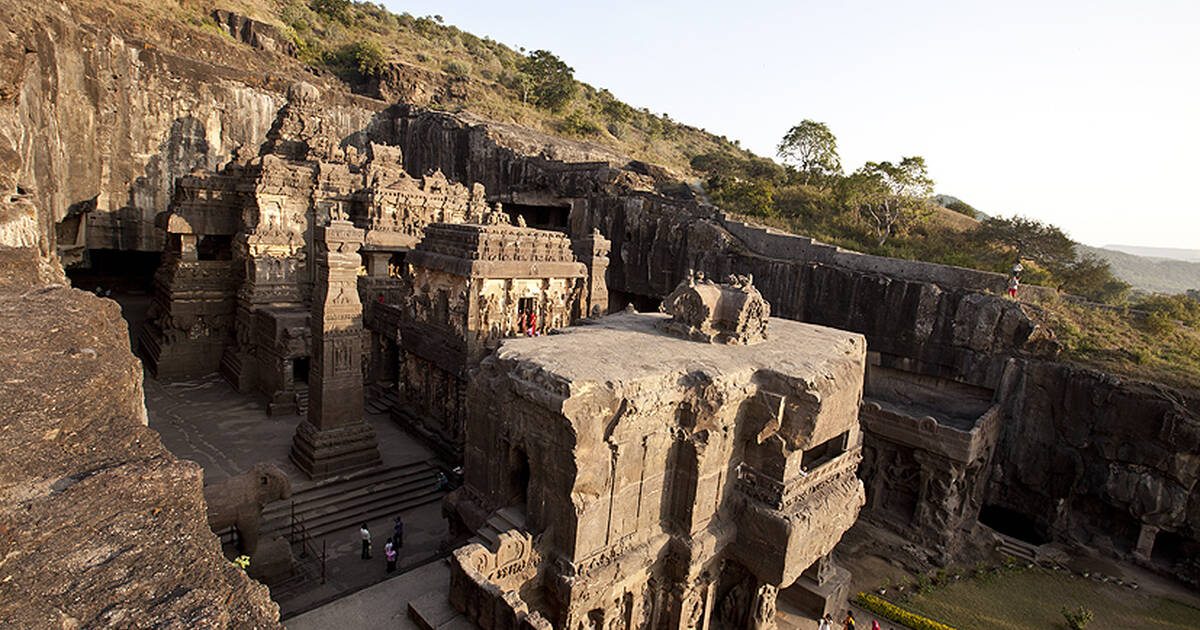Overview:
India, a land steeped in history and culture, boasts a remarkable array of UNESCO World Heritage Sites that draw travellers from around the globe. From awe-inspiring architectural wonders to serene natural landscapes, these sites are a testament to India's rich heritage. In this exploration, we delve into the top 10 UNESCO World Heritage Sites in India that not only showcase the country's diverse history but also capture the hearts and imaginations of tourists seeking unique experiences.
1: Taj Mahal - A Symbol of Eternal Love
Our journey begins with the iconic Taj Mahal in Agra, a masterpiece of architectural and artistic perfection. Commissioned by Emperor Shah Jahan in memory of his beloved wife Mumtaz Mahal, this ivory-white marble mausoleum stands as a symbol of eternal love. The symmetrical gardens, reflecting pools, and intricate marble inlay work make the Taj Mahal a UNESCO site that epitomizes India's rich Mughal heritage.
2: Qutub Minar Complex - Echoes of Dynasties Past
In the heart of Delhi stands the Qutub Minar Complex, a testament to India's historical layers. The towering Qutub Minar itself, an intricately carved sandstone tower, forms the centerpiece, surrounded by ancient ruins that tell the story of different dynasties that once ruled Delhi. The site beautifully captures India's architectural evolution over centuries.
3: Jaipur's Hill Forts - Guardians of History
Venturing into Rajasthan, we encounter a series of Hill Forts around the city of Jaipur that offer a glimpse into the region's military and architectural prowess. The Amber Fort, Nahargarh Fort, and Jaigarh Fort not only showcase breathtaking hilltop views but also embody the tales of battles and grandeur that defined Rajasthan's past.
4: Ellora and Ajanta Caves - A Journey Through Time
In the state of Maharashtra, the Ellora and Ajanta Caves beckon travelers on a journey through ancient Indian art and spirituality. The rock-cut caves of Ellora house temples, monasteries, and exquisite sculptures representing Hindu, Buddhist, and Jain traditions. The Ajanta Caves, known for their stunning murals, provide insight into the life and times of early Indian civilizations.
5: Fatehpur Sikri - A Mughal Masterpiece
Close to Agra, the deserted city of Fatehpur Sikri stands as a remarkable Mughal architectural ensemble. Built by Emperor Akbar, this red sandstone city boasts elegant palaces, grand courtyards, and the awe-inspiring Buland Darwaza, a monumental gateway that welcomes visitors into a world of imperial splendor.
6: Khajuraho Group of Monuments - Celebrating Human Passion
The intricately carved temples of Khajuraho, located in Madhya Pradesh, are a celebration of human emotions and passions. These temples, adorned with sensuous sculptures, depict various aspects of life, spirituality, and love, making them a unique UNESCO site that offers a window into India's cultural and artistic heritage.
7: Hampi - The Ruins of a Glorious Kingdom
The ruins of Hampi, Karnataka, transport visitors to a bygone era of the Vijayanagara Empire. Sprawling across a surreal landscape, the site boasts majestic temples, bazaars, and ornate structures that narrate the story of a once-thriving kingdom and its architectural marvels.
8: Western Ghats - Biodiversity Hotspot
Moving away from architectural wonders, we delve into the Western Ghats, a mountain range that stretches along the western edge of India. This UNESCO site is a biodiversity hotspot, home to numerous endemic species of flora and fauna. The lush forests, diverse ecosystems, and breath taking landscapes make it a paradise for nature enthusiasts.
9: Sundarbans National Park - Where Land Meets Water
The Sundarbans National Park, straddling the border of India and Bangladesh, is a unique mangrove ecosystem where the land and water intertwine. This UNESCO site is not only home to the elusive Royal Bengal tiger but also supports a diverse range of wildlife, making it a destination for eco-tourism and conservation efforts.
10: Great Living Chola Temples - Temples of Architectural Grandeur
Our journey concludes with the Great Living Chola Temples, a trio of temples in Tamil Nadu that exemplify the architectural prowess of the Chola dynasty. The Brihadeeswarar Temple in Thanjavur, the Airavateshwarar Temple in Darasuram, and the Gangaikonda Cholapuram Temple together form a UNESCO site that showcases the grandeur of India's temple architecture.
Conclusion:
India's UNESCO World Heritage Sites are not mere monuments; they are windows into its soul. From the eternal love story immortalized in the Taj Mahal to the intricate carvings of the Khajuraho Temples, each site tells a story of history, culture, and human creativity. These top 10 sites provide an immersive experience for tourists, allowing them to connect with India's past, appreciate its present, and glimpse its boundless potential for the future. As travellers explore these sites, they embark on a journey through time and space, encountering the essence of India's diverse and enchanting heritage.
